Nová numismatická expozice - Zámek Pardubice
Project category ‐ Architectural design, small scale architecture and creative work in architecture

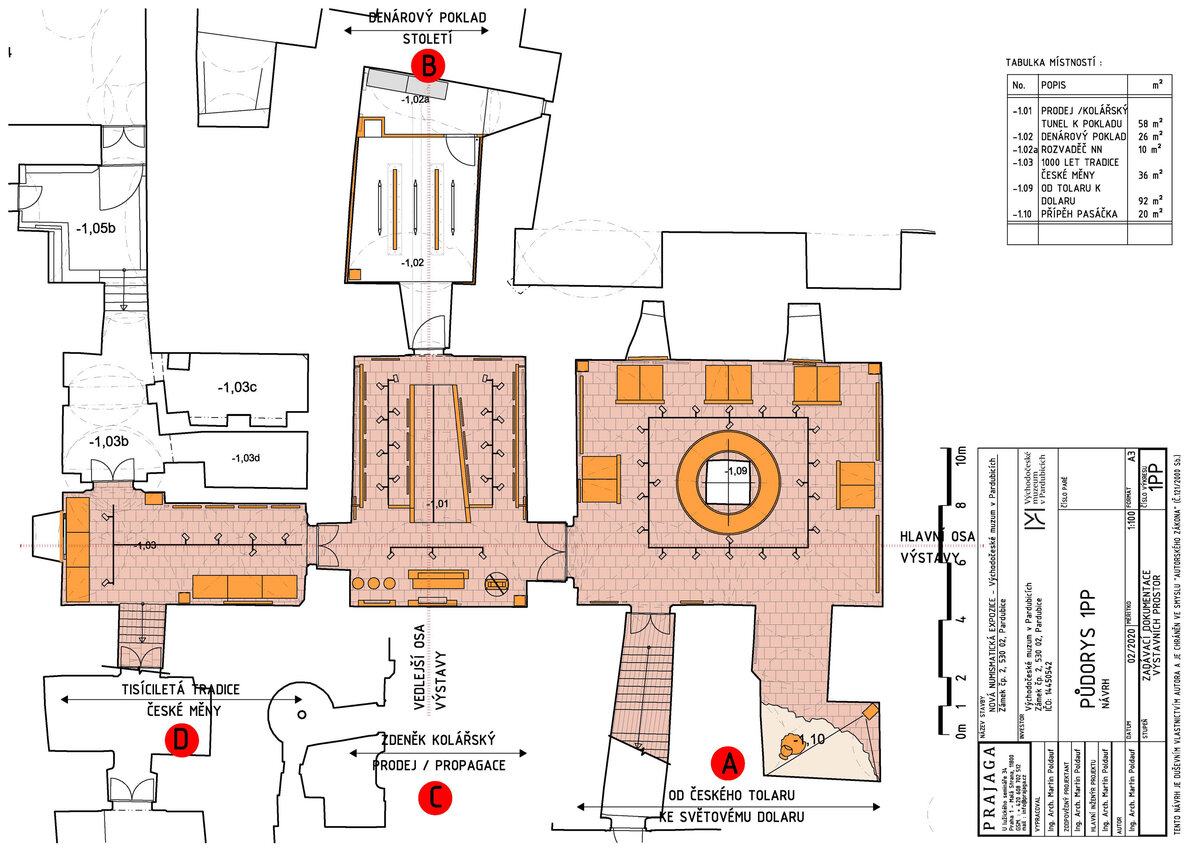
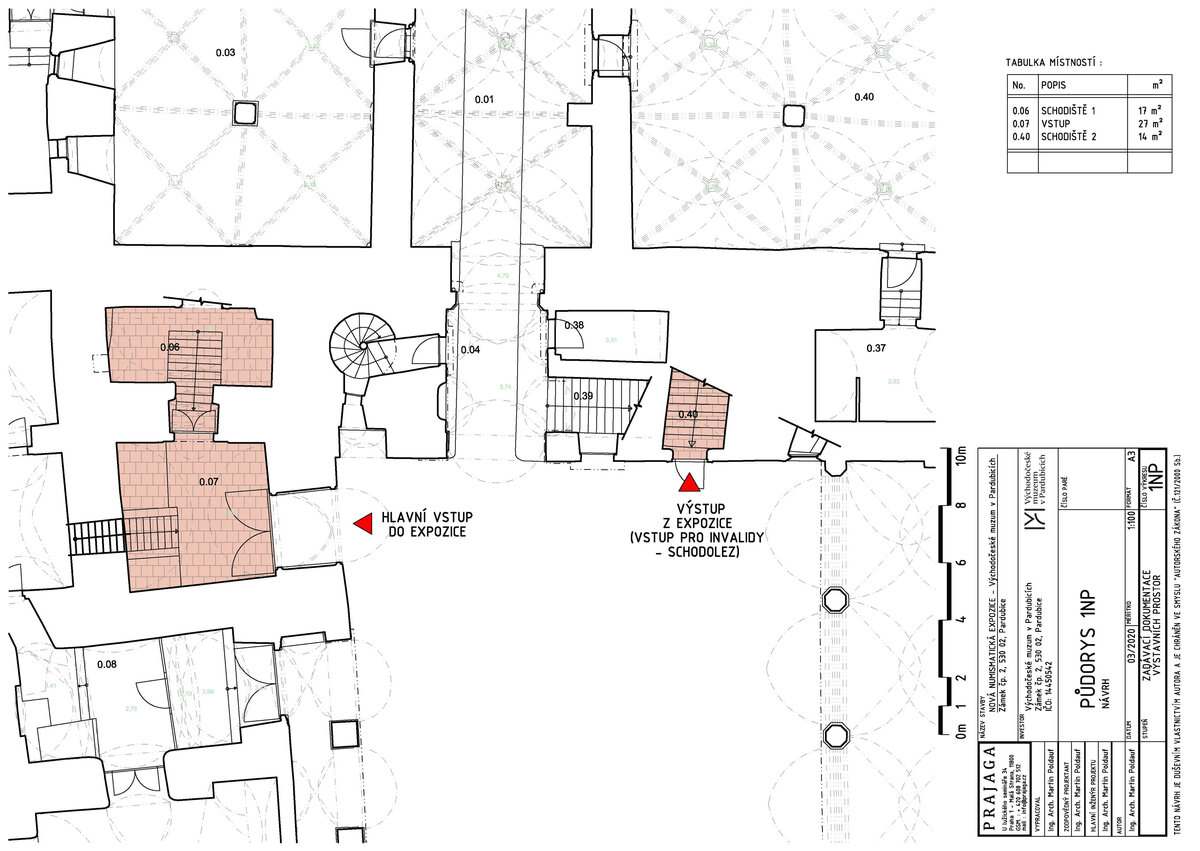
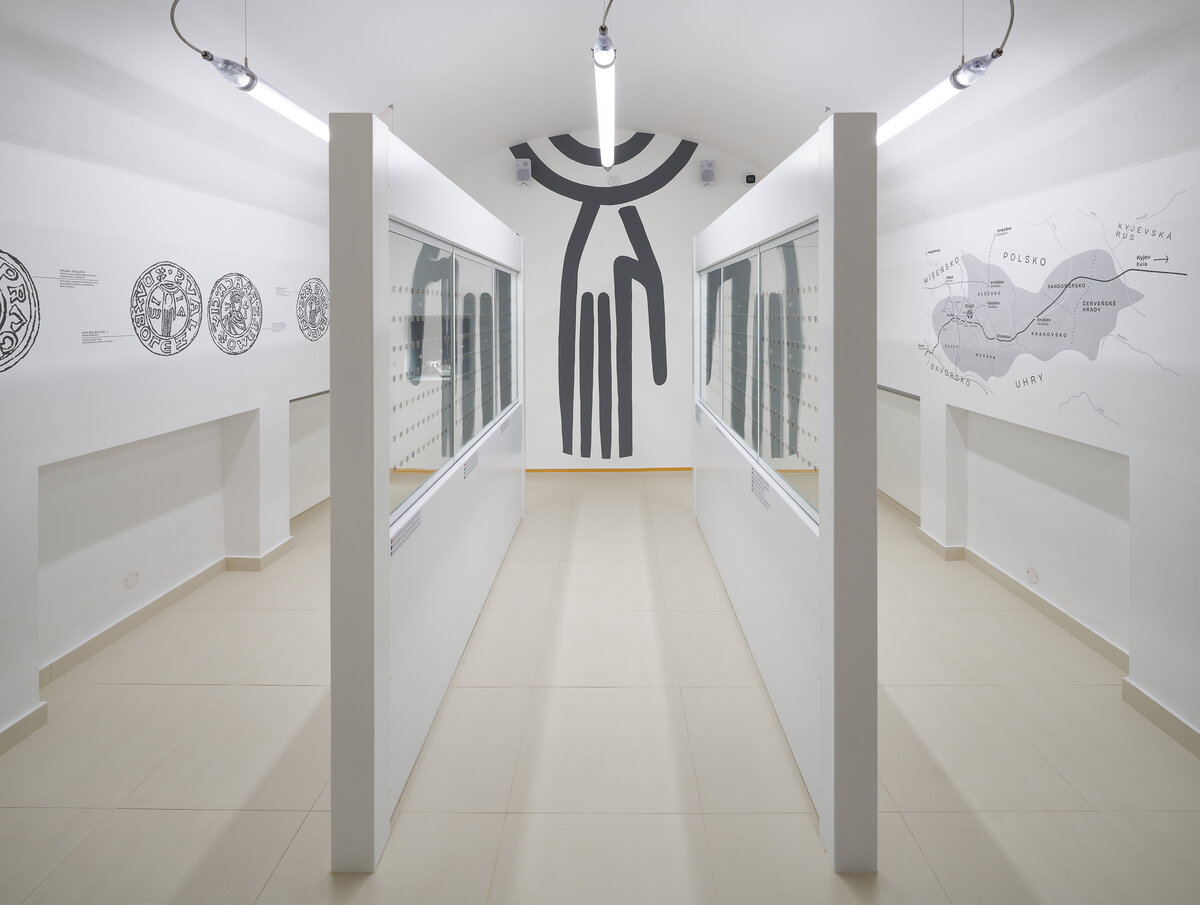
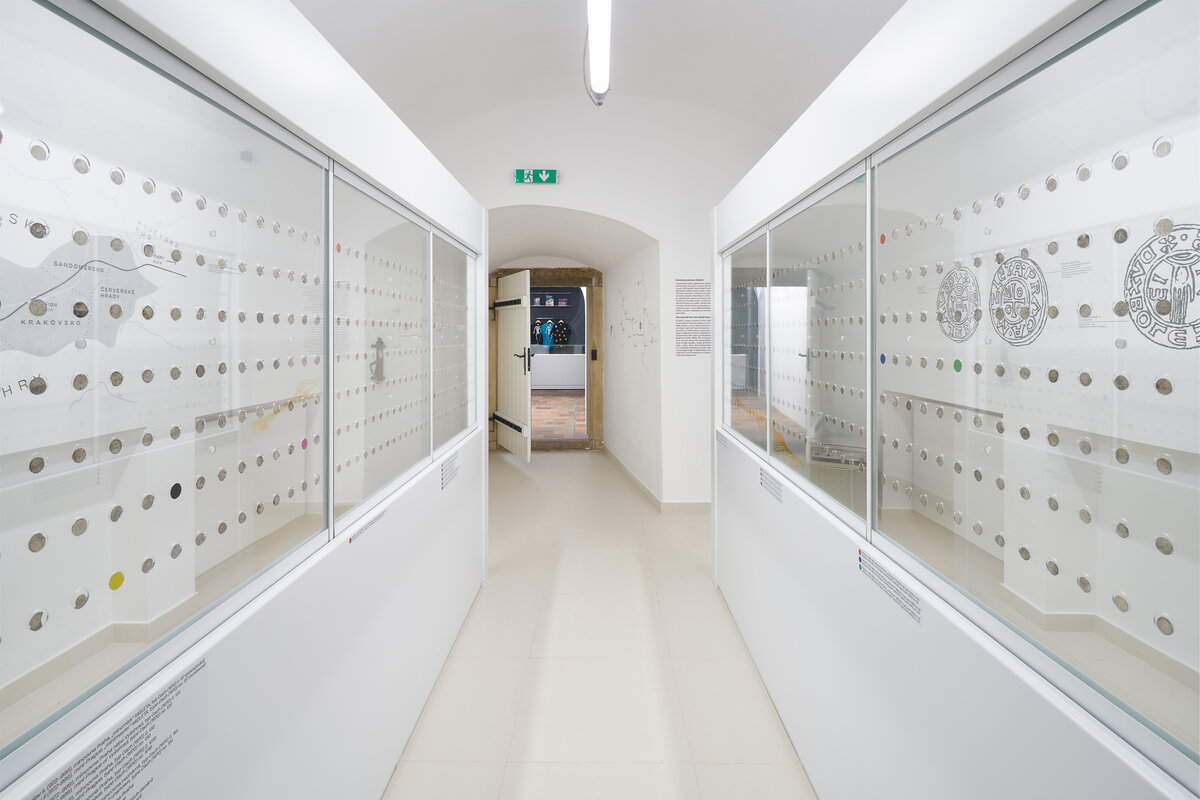
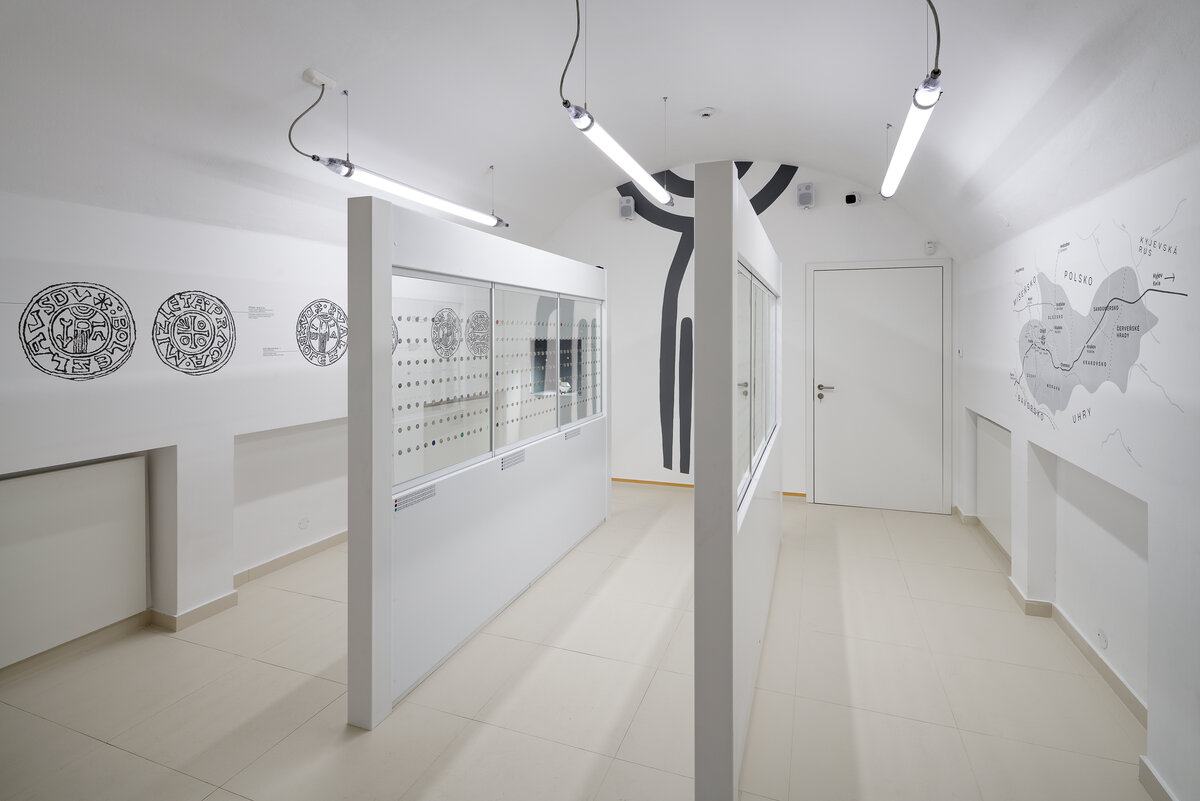
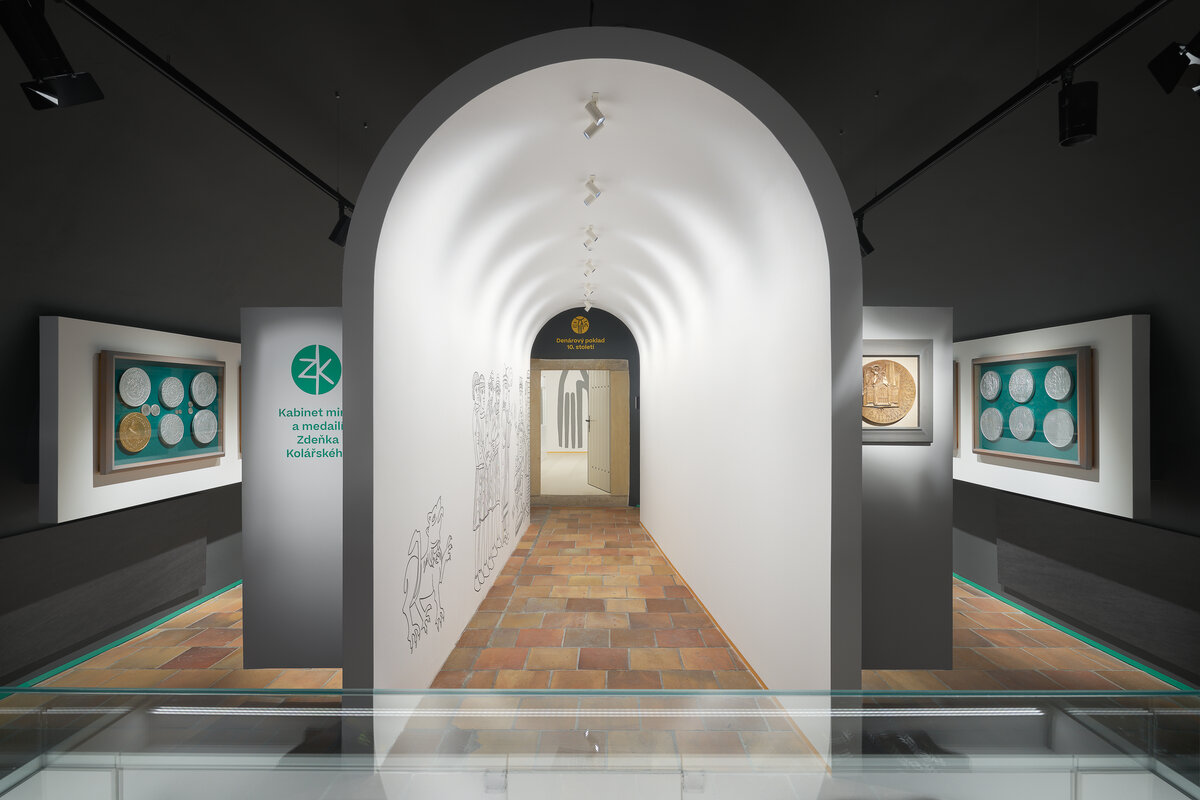

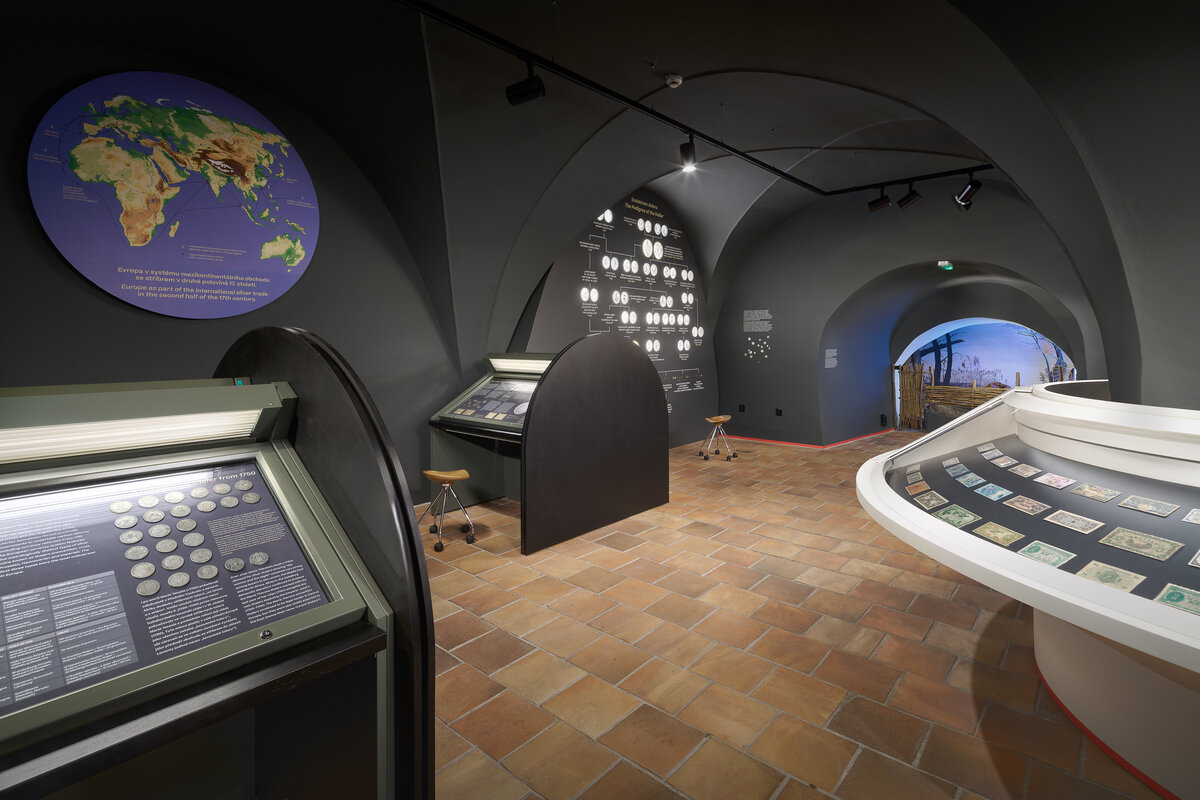

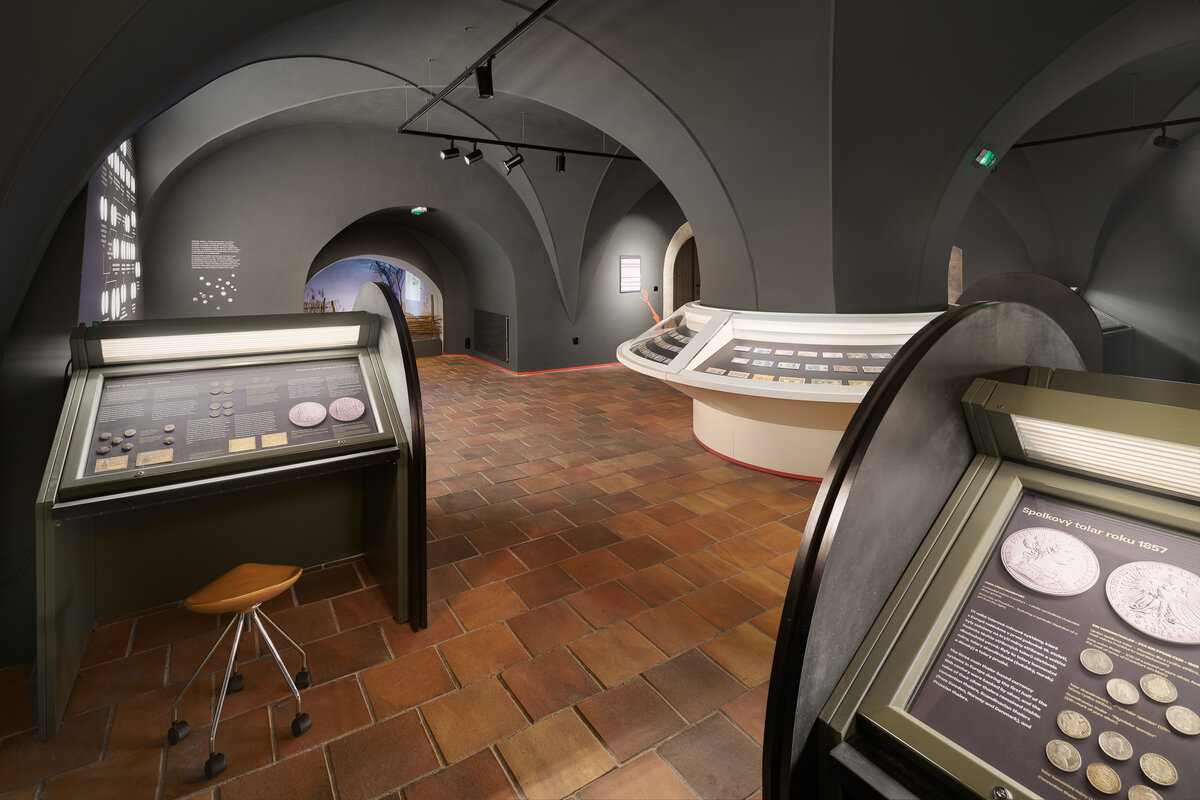

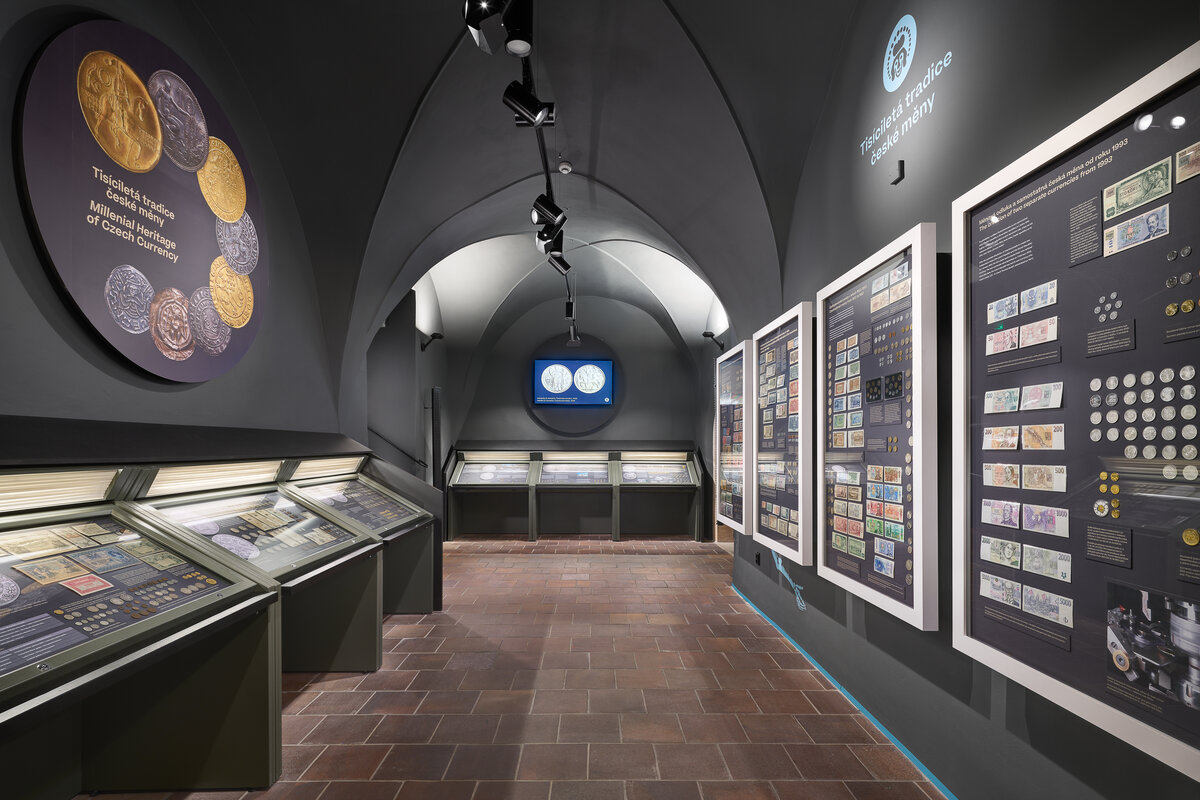
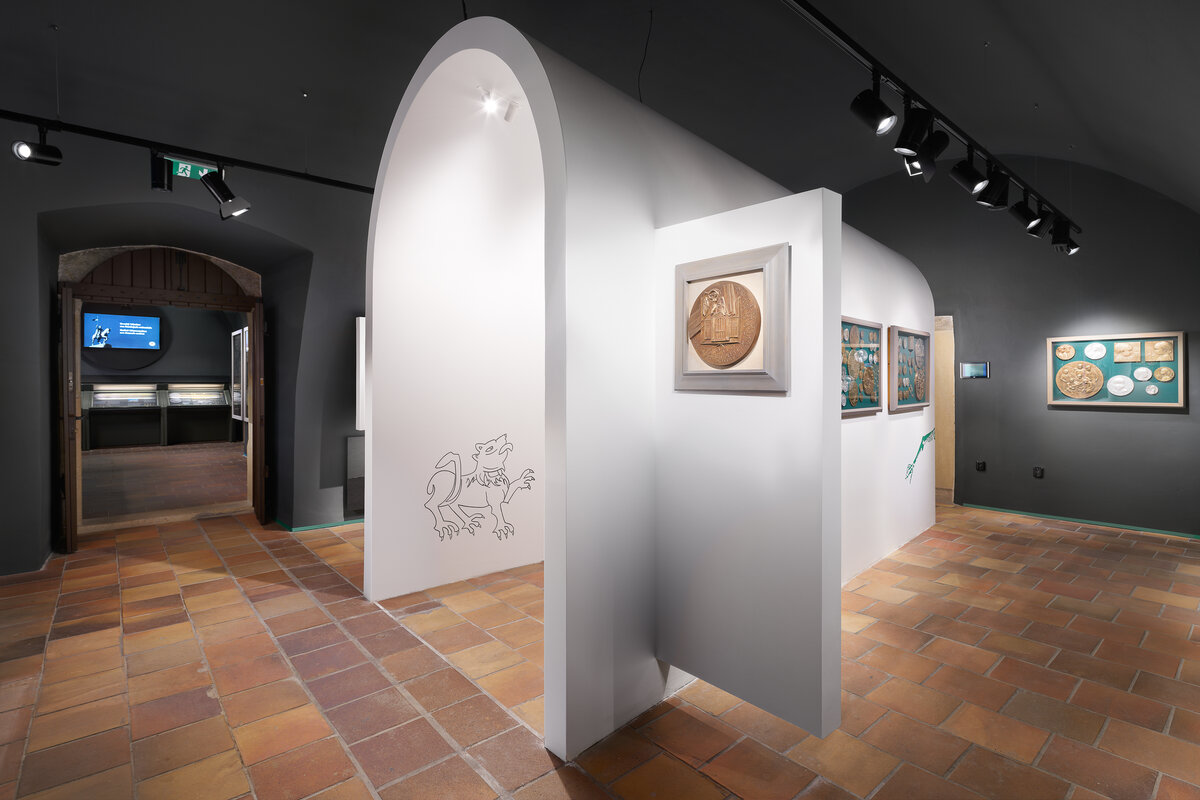
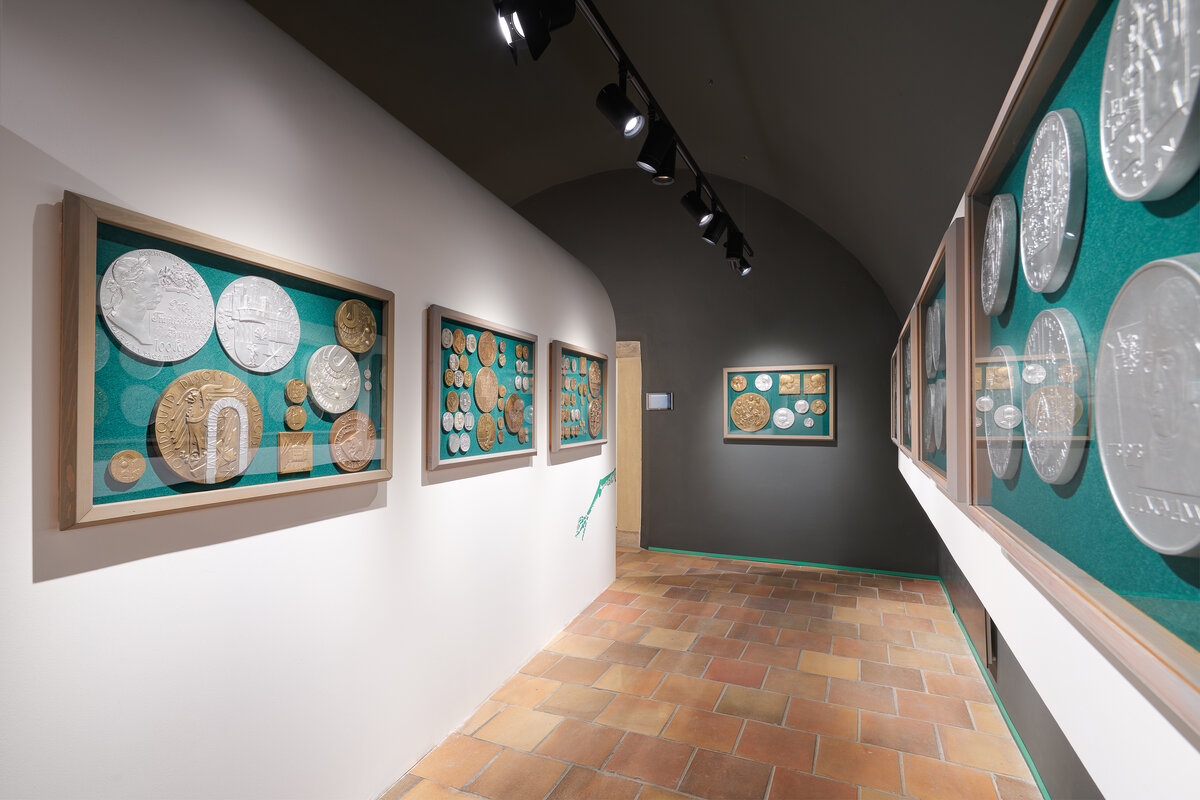
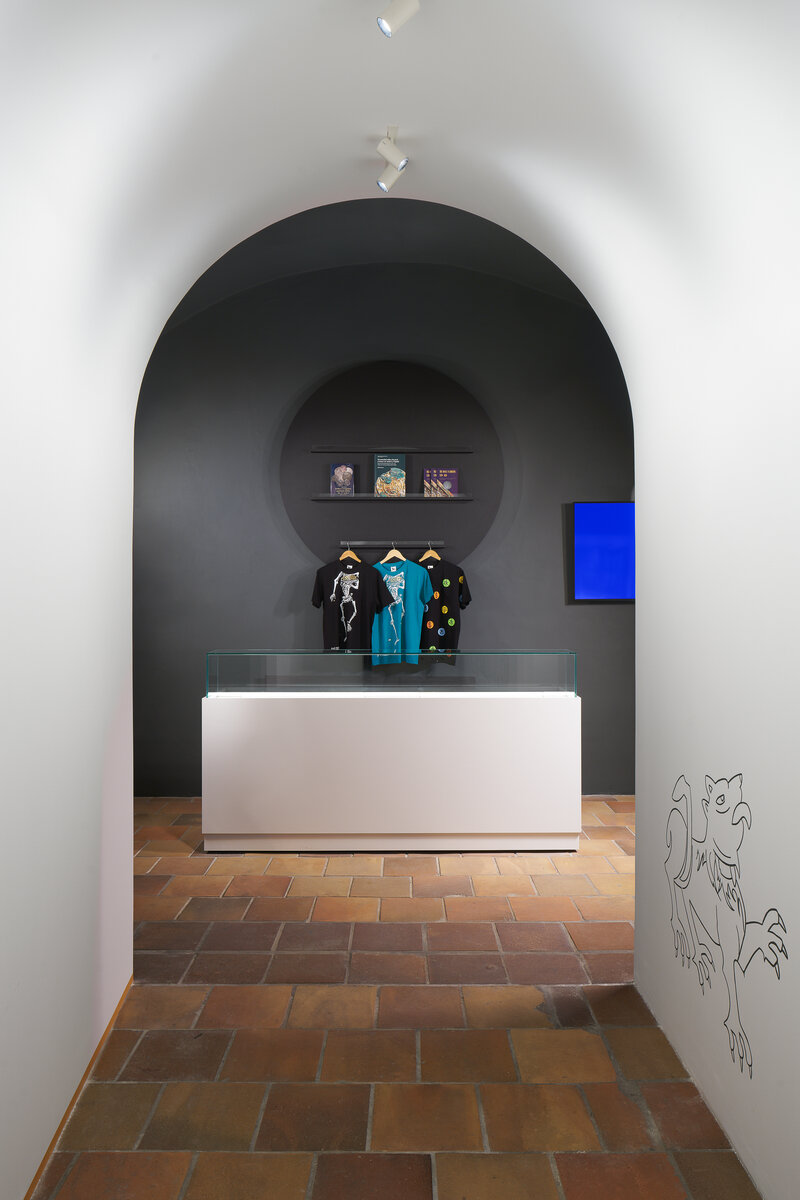

| Author | Architektonická část: Martin Poldauf – Prajaga ; Výtvarné řešení: MgA. Veronika Doutlíková – VCM ; Grafické řešení: Mgr. Filip Blažek, Abalon s.r.o. |
|---|---|
| Studio | |
| Location | Východočeské muzeum v Pardubicích Zámek čp. 2 530 02 Pardubice |
| Investor | Východočeské muzeum v Pardubicích Zámek čp. 2 530 02 Pardubice |
| Supplier | Realizace expozice: Sun Drive s.r.o., Východočské muzeum Pardubice Realizace stavebních úprav: Archatt Památky s.r.o., Callipso Pardubice s.r.o. Speciální vitríny: Bláha ús, s.r.o. Osvětlení: ETNA s.r.o. |
| Date of completion / approval of the project | December 2021 |
| Fotograf |
The newly created exhibition space for the Numismatic Collection of the East Bohemian Museum in Pardubice is located in the basement of the Pardubice Castle. The exhibition is divided into four separate parts, all accessible by a single staircase from the entrance hall at the courtyard of the chateau.
The study was developed based on the scenario by Prof. Petr Vorl, PhDr. The exhibition is divided into 4 themes:
A) The history of dollar: from the silver Czech thaler to the worldwide dollar
B) Silver denarii treasure from the 10th century
C) Zdeněk Kolářský collection of coins and medals
D) Millennial heritage of Czech currency
* For the purposes of the exhibition, the concept starts with the theme D) and ends with theme A).
The concept of the exhibition is simple. It is based on the floor plan and characteristics of the rooms (the vaulted vault, cross vaults around the central column etc.). The exhibition has one main axis, through which the visitor covers three main themes. Perpendicular to it is the secondary axis of the exhibition, which "hides" the main pride of the numismatic collection - the denarii. It is accessible via a white tunnel featuring the collection of coins and medals of Zdeněk Kolářský.
The colour scheme is based on the basic contrast of dark and light colours. Neutral, dark spaces (vaults and walls painted in black) let lighted showcases or wall panels stand out. In stark contrast, the treasure room is all white - an ambiently lit vault hiding a denary find.
The furnishings used were partly existing - freestanding display cabinets complemented by wall panels and new display cases. These include a circular feature around the central column, an access tunnel to the treasury and a souvenir counter. The vaulted room contains two vaults denarii treasure. The coins are stored in glass cases so that they can be admired from both sides.
The main motto of the whole exhibition is „You can't take your money to your grave“.
The newly created exhibition space for the Numismatic Collection of the East Bohemian Museum in Pardubice is located in the basement of the Pardubice Castle. The exhibition is divided into four separate parts, all accessible by a single staircase from the entrance hall at the courtyard of the chateau.
The study was developed based on the scenario by Prof. Petr Vorl, PhDr. The exhibition is divided into 4 themes:
A) The history of dollar: from the silver Czech thaler to the worldwide dollar
B) Silver denarii treasure from the 10th century
C) Zdeněk Kolářský collection of coins and medals
D) Millennial heritage of Czech currency
* For the purposes of the exhibition, the concept starts with the theme D) and ends with theme A).
The concept of the exhibition is simple. It is based on the floor plan and characteristics of the rooms (the vaulted vault, cross vaults around the central column etc.). The exhibition has one main axis, through which the visitor covers three main themes. Perpendicular to it is the secondary axis of the exhibition, which "hides" the main pride of the numismatic collection - the denarii. It is accessible via a white tunnel featuring the collection of coins and medals of Zdeněk Kolářský.
The colour scheme is based on the basic contrast of dark and light colours. Neutral, dark spaces (vaults and walls painted in black) let lighted showcases or wall panels stand out. In stark contrast, the treasure room is all white - an ambiently lit vault hiding a denary find.
The furnishings used were partly existing - freestanding display cabinets complemented by wall panels and new display cases. These include a circular feature around the central column, an access tunnel to the treasury and a souvenir counter. The vaulted room contains two vaults denarii treasure. The coins are stored in glass cases so that they can be admired from both sides.
The main motto of the whole exhibition is „You can't take your money to your grave“.
Green building
Environmental certification
| Type and level of certificate | - |
|---|
Water management
| Is rainwater used for irrigation? | |
|---|---|
| Is rainwater used for other purposes, e.g. toilet flushing ? | |
| Does the building have a green roof / facade ? | |
| Is reclaimed waste water used, e.g. from showers and sinks ? |
The quality of the indoor environment
| Is clean air supply automated ? | |
|---|---|
| Is comfortable temperature during summer and winter automated? | |
| Is natural lighting guaranteed in all living areas? | |
| Is artificial lighting automated? | |
| Is acoustic comfort, specifically reverberation time, guaranteed? | |
| Does the layout solution include zoning and ergonomics elements? |
Principles of circular economics
| Does the project use recycled materials? | |
|---|---|
| Does the project use recyclable materials? | |
| Are materials with a documented Environmental Product Declaration (EPD) promoted in the project? | |
| Are other sustainability certifications used for materials and elements? |
Energy efficiency
| Energy performance class of the building according to the Energy Performance Certificate of the building | G |
|---|---|
| Is efficient energy management (measurement and regular analysis of consumption data) considered? | |
| Are renewable sources of energy used, e.g. solar system, photovoltaics? |
Interconnection with surroundings
| Does the project enable the easy use of public transport? | |
|---|---|
| Does the project support the use of alternative modes of transport, e.g cycling, walking etc. ? | |
| Is there access to recreational natural areas, e.g. parks, in the immediate vicinity of the building? |